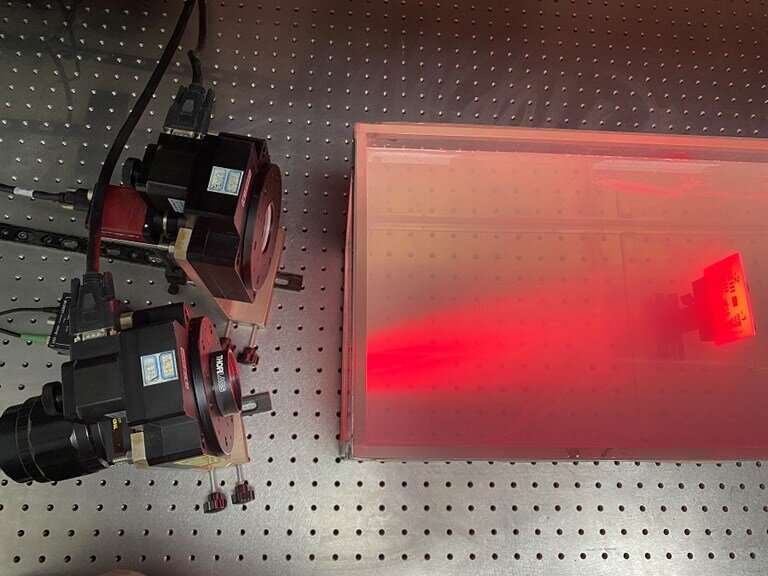
Researchers have developed a new
method that can automatically produce clear images through murky water. The new
technology could be useful for searching for drowning victims, documenting
submerged archaeological artifacts and monitoring underwater farms.
Imaging clearly underwater is extremely challenging because the water and the particles in it tend to scatter light. But, because scattered light is partially polarized, imaging using a camera that is sensitive to polarization can be used to suppress scattered light in underwater images.
"Our new method overcomes the limitations of traditional polarimetric underwater imaging, laying the groundwork for taking this method out of the lab and into the field," said research team leader Haofeng Hu from Tianjin University in China. "Unlike previous methods, there's no requirement for the image to include a background area to estimate the backscattered light."
In The Optical Society (OSA) journal Optics Express, the researchers demonstrate their method's ability to enhance image contrast while preserving image details without introducing considerable noise. The new method even works in dense turbid water, which is so cloudy it is almost impossible to see through.
"Our polarimetric imaging method can improve the image quality in various scattering media, not just turbid water," said Hu. "We think the principle we used might be extendable to imaging through other scattering media such as fog, haze and smoke."
Practical underwater imaging
Traditional approaches to underwater imaging use either prior knowledge of the imaging area or the background of an image to calculate and remove scattered light. These methods have limited utility in the field because they typically require manual processing, images do not always have visible backgrounds, and prior information is not always available.
To overcome these challenges, the researchers combined a traditional polarized imaging setup with a new algorithm that automatically finds the optimal parameters to suppress the scattering light. This not only significantly improves image contrast to achieve clear imaging but can be used without any prior knowledge of the imaging area and for images with or without background regions.
"Our approach represents a distinct improvement that could enable practical application of underwater polarimetric imaging beyond the 'ideal' underwater environment found in the laboratory," said Hu. "It could be adapted for a variety of applications in which clear vision is critical but where image quality is usually poor due to turbid water."
Seeing through murky water
The researchers tested their new technique by acquiring images in turbid liquid mixtures in the laboratory. They started with a transparent tank filled with water and then blended in different amount of milk to mimic an underwater environment with different turbidities. They imaged various objects made from a variety of materials, such as wood, plastic and ceramic.
"Our experimental results show that our method has distinct advantages in terms of suppressing scattering, recovering details and reducing noise when imaging different objects in water with various turbidities," said Hu. "While background regions are often not visible in dense turbid water, our method was able to accomplish clear vision in this environment."
Now that the method has been demonstrated in the lab, the researchers plan to test it in a practical underwater environment such as in the ocean. They also plan to improve the imaging distances to make it more useful in a real-world underwater environment.

 Previous page
Previous page Back to top
Back to top







